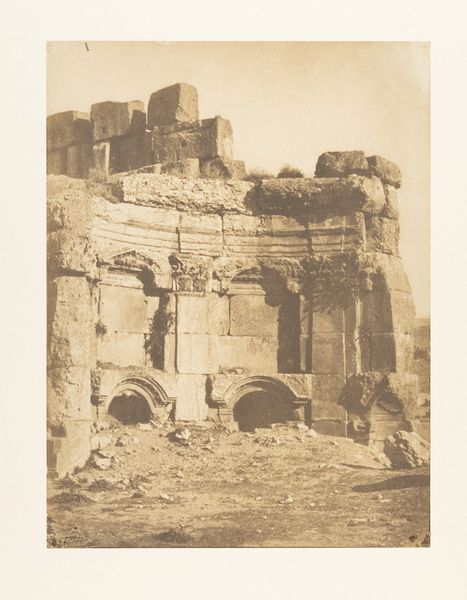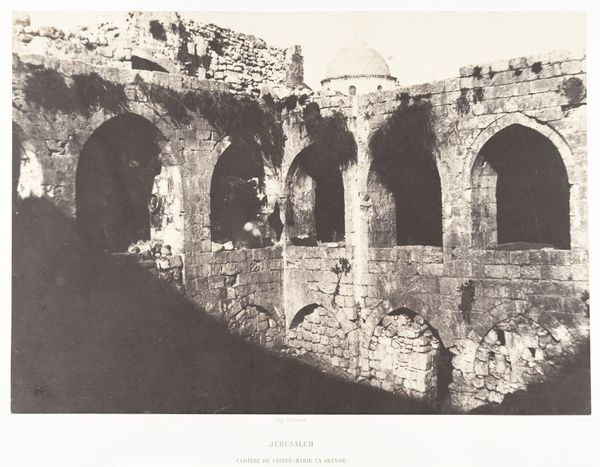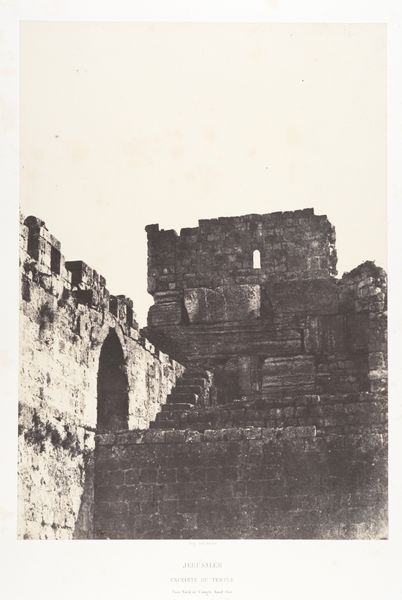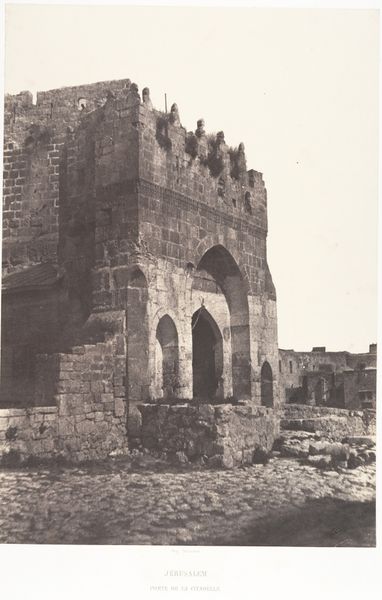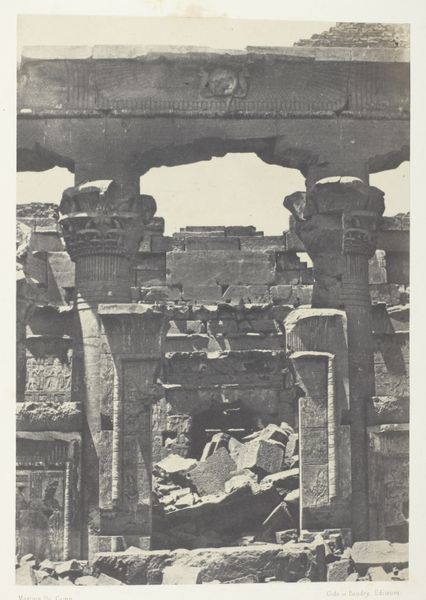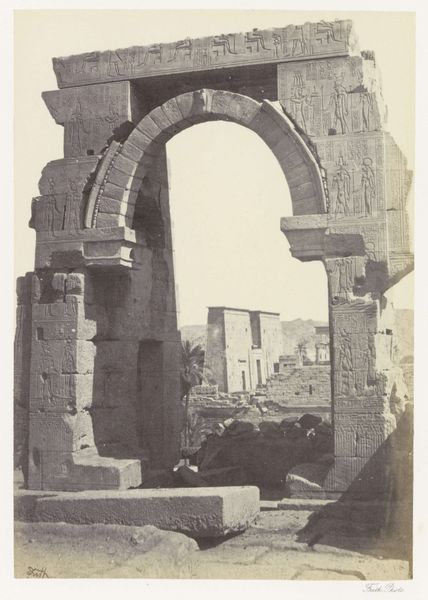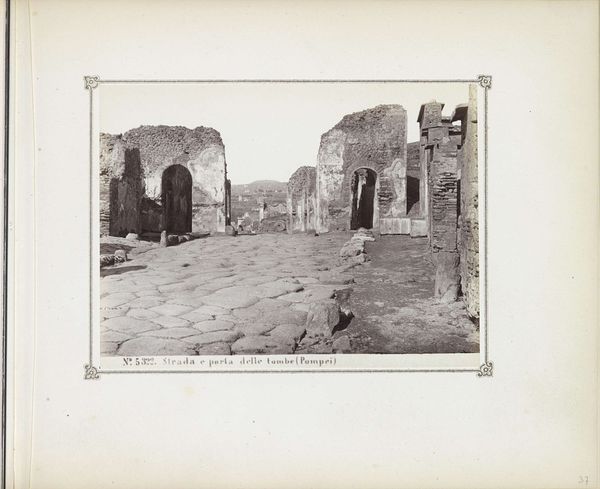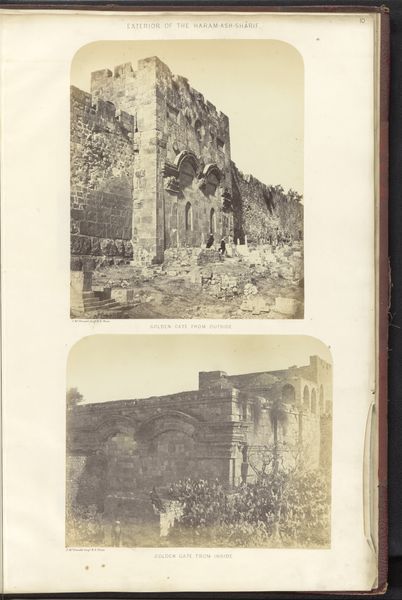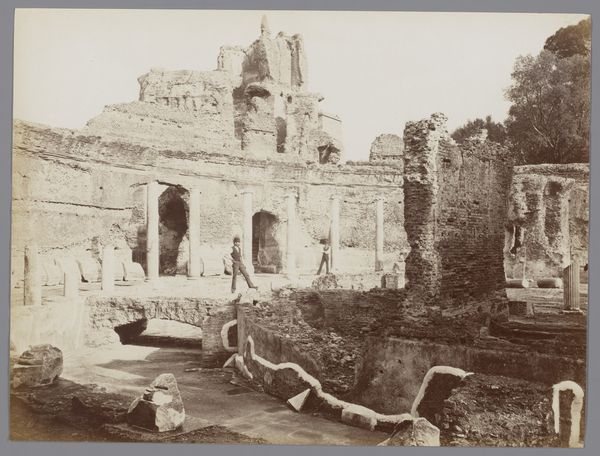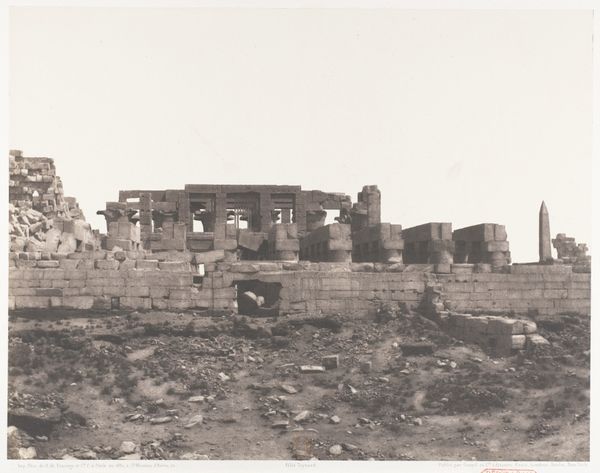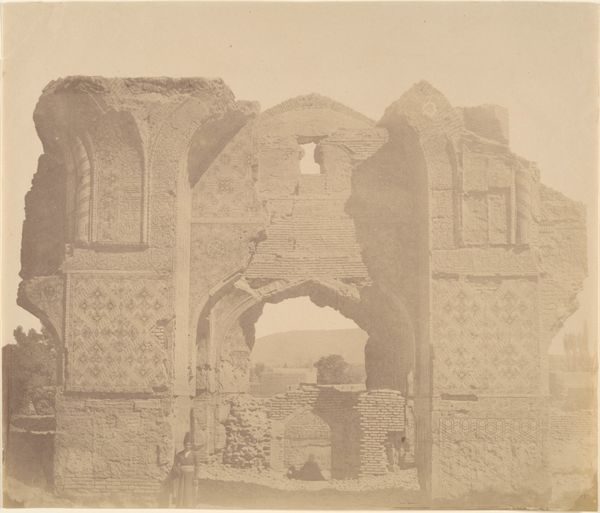
Baalbeck (Héliopolis), Hémicycle De L'Enciente Des Temples Du Soleil Et De Jupiter; Syrie Possibly 1849 - 1852
0:00
0:00
print, paper, photography, site-specific
#
16_19th-century
# print
#
landscape
#
paper
#
photography
#
ancient-mediterranean
#
orientalism
#
site-specific
Dimensions: 21.7 × 16.3 cm (image/paper); 43 × 30.1 cm (album page)
Copyright: Public Domain
Editor: Here we have Maxime Du Camp’s photograph, “Baalbeck (Héliopolis), Hémicycle De L'Enciente Des Temples Du Soleil Et De Jupiter; Syrie," likely taken between 1849 and 1852. It’s a sepia-toned print that captures this immense structure in partial ruin. I find the image striking; it presents the monumentality of history in contrast with its fragility through time. What stands out to you most? Curator: I'm drawn to how Du Camp uses visual language to evoke a sense of the sacred and the temporal. Consider the framing – the broken edges, the scattered stones. What do these elements suggest about cultural memory? How has the function of this sacred space shifted across cultures and religions, echoing through the symbolism inherent in its ruins? Editor: It's fascinating how the ruins themselves become symbols. It's almost as if the photograph is layering time. Curator: Precisely. Notice how light and shadow play across the stone. Do you see how that creates an atmosphere of solemnity, or perhaps even longing for a lost grandeur? What emotional response does the imagery incite in you, and how might that reflect collective anxieties about the passage of civilizations? Editor: I do feel a sense of loss. Like I'm seeing something fading away. Is that feeling connected to the Orientalist movement at all? Curator: The Orientalist perspective certainly plays a role. It’s about exoticism, about capturing and preserving an image of a "lost" or "dying" culture. The photograph presents not just a landscape, but a perceived historical narrative laden with European sensibilities. What contemporary implications do you believe that carries in regards to cultural narratives? Editor: I hadn't considered the layers of interpretation involved in viewing this piece! Curator: Indeed. The beauty of art lies not just in what is shown, but also what is suggested, and how that resonates across time and cultures.
Comments
No comments
Be the first to comment and join the conversation on the ultimate creative platform.
